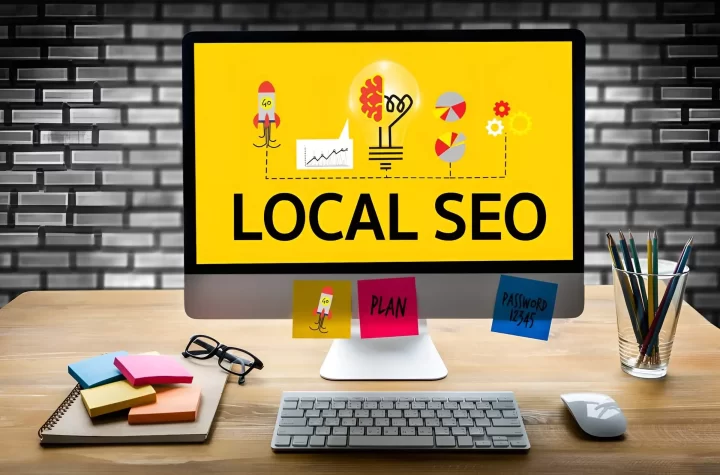
Social Media
The goal of any digital marketing strategy is to increase brand awareness, grow an audience, and attract new customers.
All of these combined should lead to the ultimate goal: A significant increase in sales!
A digital marketing strategy is a map that outlines how a business will build an online presence through various channels such as social media, organic search, email, advertising, and other web-based content such as a blog or website.
It looks at what’s doing well in your business and what is currently missing, in regard to the objectives that have been set.
The ultimate aim of search engine optimization (SEO) is to get a website high up in the search results so potential customers see the listing first (and visit that website).
The volume of content published every day on the web means the odds of content ranking high on search engine results can be slim.
However, skilled marketers know there are many strategies to effectively jump up the list! When combined, they can be a powerful tool in seeing long-term success.
This article will cover three digital marketing strategies that can impact search rankings: social media marketing, content creation, and email marketing.
What is SEO?
Search engine optimization (SEO) is a technique that helps a website rank higher in search engine result pages (SERPs). This process aims to bring in organic traffic from search results pages.
Search results are based on keywords and phrases that users type in, which are ranked based on their relevance to the search engine user.
Through SEO, businesses try to rank their material and content for relevant keywords aimed at their target audience. Optimizing site content for search engines ultimately improves a business’s online visibility.
Social Media Marketing
While social media indirectly contributes to SEO ranking, the content that’s linked and shared across these platforms has the potential to increase brand exposure, which can influence SEO.
Social media marketing leverages platforms like Twitter, Instagram, and Facebook to drive people to a website, build brand awareness, and generate new leads and sales.
Social media marketing works by humanizing a business by turning it into an active participant in the market; one that its customers can connect and interact with and learn to trust.
As social media is where a large proportion of the population spends their time, it’s where potential customers discover and learn about new brands, shop, and consume published content.
According to statistics, 4.62 billion people worldwide are on social media today.
That equates to just over half the global population, and makes up 93.4 percent of all internet users!
In addition to marketing a brand, many social media platforms include paid advertising to have their business appear in large volumes of targeted users’ feeds.
Having more social media followers doesn’t mean higher rankings on a search engine.
Since 2014, Google no longer ranks social signals to boost rankings for its SEO. However, social media platforms are effective strategies for promoting content and attracting more traffic and conversions.
When more users share a website’s content through social media channels, this generates social signals that indicate to Google that these posts are useful to your target market.
When a website creates and publishes high-quality material that provides value to its target audience, the content gets amplified when it’s shared. This in turn boosts website traffic and improves an SEO ranking through positive social signals.
Social signals can also lead to backlinks (when one website links to another), which improves SEO rankings, and more views on content again increases the likelihood of someone linking to a webpage.
To effectively market on social media, a business should think about implementing measurable goals into an evolving strategy.
These may include maintaining and optimizing its profile, posting a variety of fresh content, engaging with its audience and followers, and monitoring and building a good reputation.
Content Creation
Digital marketers know that internet users love to consume information.
According to statistics, nearly 93 percent of marketers use content as a strategy.
Of those who use content, 54 percent said it was the most important part of their SEO strategy.
A common content marketing strategy for businesses in all industries is blogging, and marketers who do are 13 times more likely to see a positive return on investment.
Content creation aims to reach and engage with potential customers via content.
This content might be in the form of blogs, ebooks, how-to guides, videos, or infographics, but its purpose is to provide informational content that is valuable to the user.
Content marketing differs from traditional marketing in that it works indirectly with customers by providing valuable information, while at the same time potentially stimulating in them an interest in a product or service.
Successful brands that excel at this strategy build authentic relationships with their audiences as their customers learn to trust and rely on them as an authoritative source of information or problem-solving, and not just a push to sell.
A content marketing strategy focuses on keywords and phrases in its content to target audiences to increase traffic and generate conversions. It will optimize that content for improved SEO visibility.
When a potential customer searches for a topic that is relevant to a brand, product or service, it’ll rank on Google, drive traffic to the website, and potentially build a connection that may lead to conversion!
Whatever the form of content, marketers know that it’s critical that the content that is published is both relevant and beneficial to its audience.
It must have the ability to lure customers in, as well as solve a problem or issue for them.
Original and high-quality content will make users want to share it with others, and also helps the brand build trust as an authority or reputable source of information.
SEO content marketing requires consistency in order to see success.
Fresh, unique content that delivers a creative voice will be viewed and therefore shared more, which will in turn get indexed and rank higher than content that is low-quality or repetitive.
Email Marketing
While it may not seem like there’s a direct connection to email marketing and SEO, marketers often see high value in integrating the two.
Email marketing builds and nurtures a direct relationship with customers by emailing them content that a business publishes.
An effective email marketing strategy will also drive traffic to the website, which in turn powers off-page SEO.
Email marketing helps boost a website’s rank by encouraging sharing, commenting, liking, and exploring other website pages.
Once content is published on a website, it can be shared with email subscribers, which converts to more traffic and potential sales. This bumps up views and shares which positively impacts SEO rating, as Google ranks it as valuable.
Email is also another way of earning backlinks. These are earned through publishing content and then sharing it with authority sites. This boosts a website’s credibility and therefore increases a website’s SEO ranking as well.
SEO and keyword research can help to expose the topics that are popular with your target audience, and then be included in an email marketing campaign or optimization.
Targeted keywords and popular topics help to formulate titles and lure customers into opening emails.
Traffic rates on a website are also helpful in determining the most popular content in the sales funnel and then building segmented email lists.
Segmenting email lists will send content to potential or existing customers, based on where they sit in the sales funnel. Optimized email marketing can build transaction rates that are far higher than non-personalized emails.
This form of marketing is best when utilized in conjunction with other marketing strategies to encourage growth in the sales funnels toward conversion.
In Conclusion
For any digital marketing strategy, SEO is the central tool that will drive potential customers to a business via online platforms.
It’s the process of increasing visibility and traffic to a website so that it ranks well in search engine results.
The right digital marketing strategy will use a combination of different platforms- social media, website content, and email- to optimize search rankings for seeing long-term success. When combined, they provide an extremely powerful tool.
Social media doesn’t directly contribute to SEO ranking, but when content is linked and shared across various platforms, it can drive up rankings.
It also increases brand exposure and humanizes a business, by connecting in real-time with its audience.
Content creation works indirectly by providing consumers with valuable information and building authentic relationships with their audiences.
An effective content marketing strategy focuses on keywords and phrases to target audiences, increase traffic, and generate conversions- therefore, optimizing SEO visibility.
Finally, an email marketing plan can be used to share published content on websites with email subscribers, which converts to more traffic and potential sales and bumps up views and shares. Again, this has the effect of positively impacting a business’ SEO!




More Stories
Grow Any Business : Email Marketing Services | 2024
Mobile SEO Guide: Ways to Improve Mobile Ranking
How Digital Marketing Actually Works